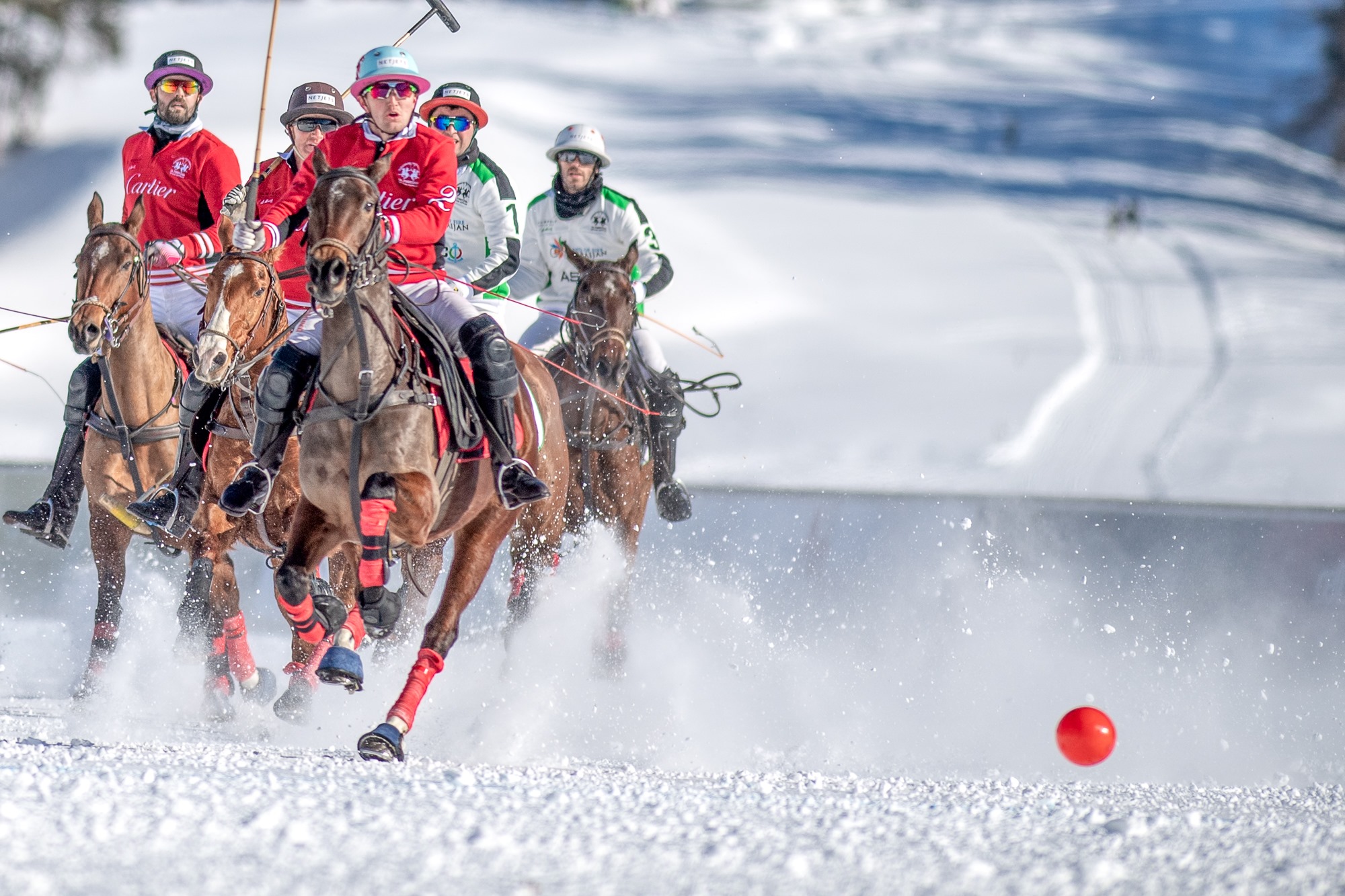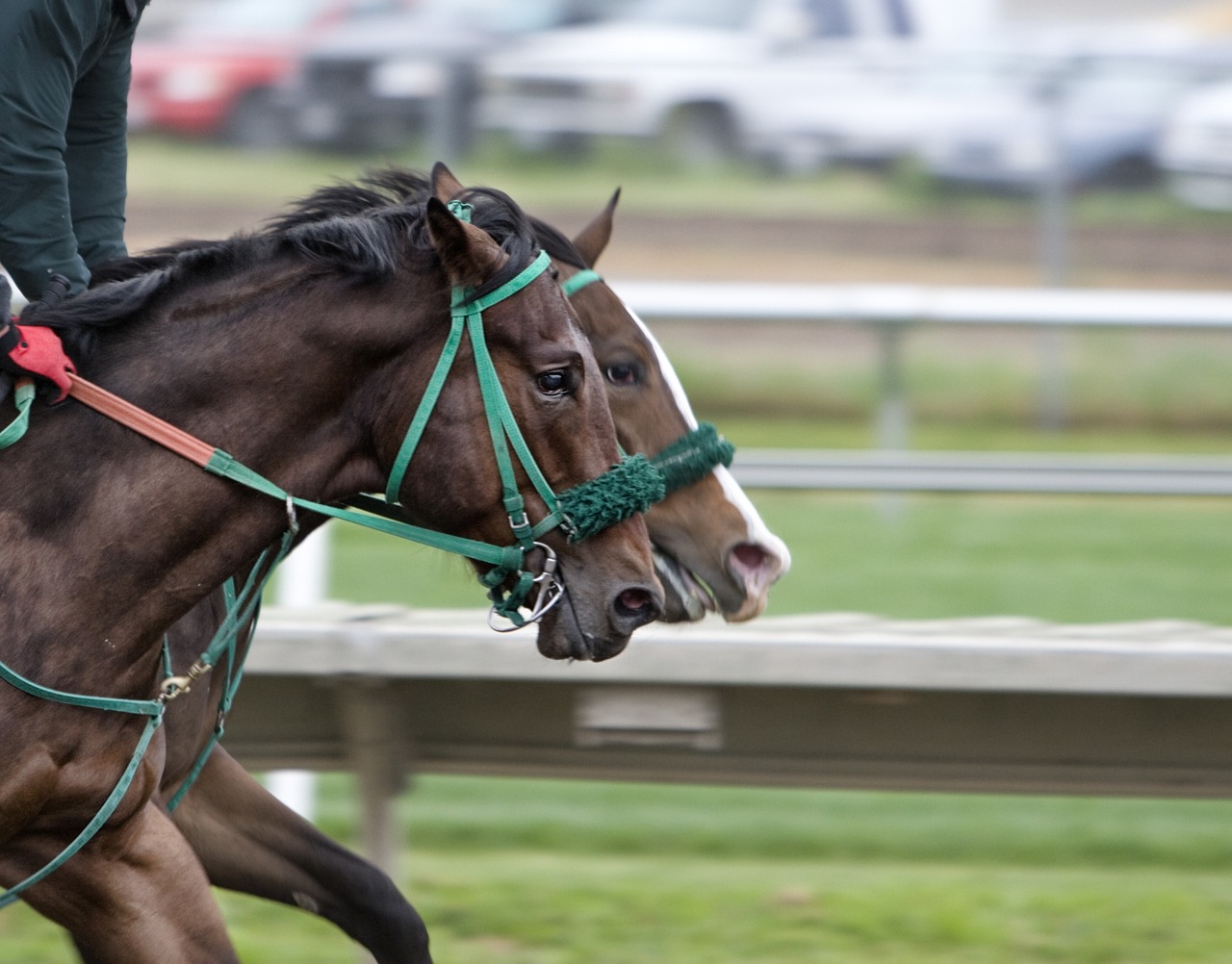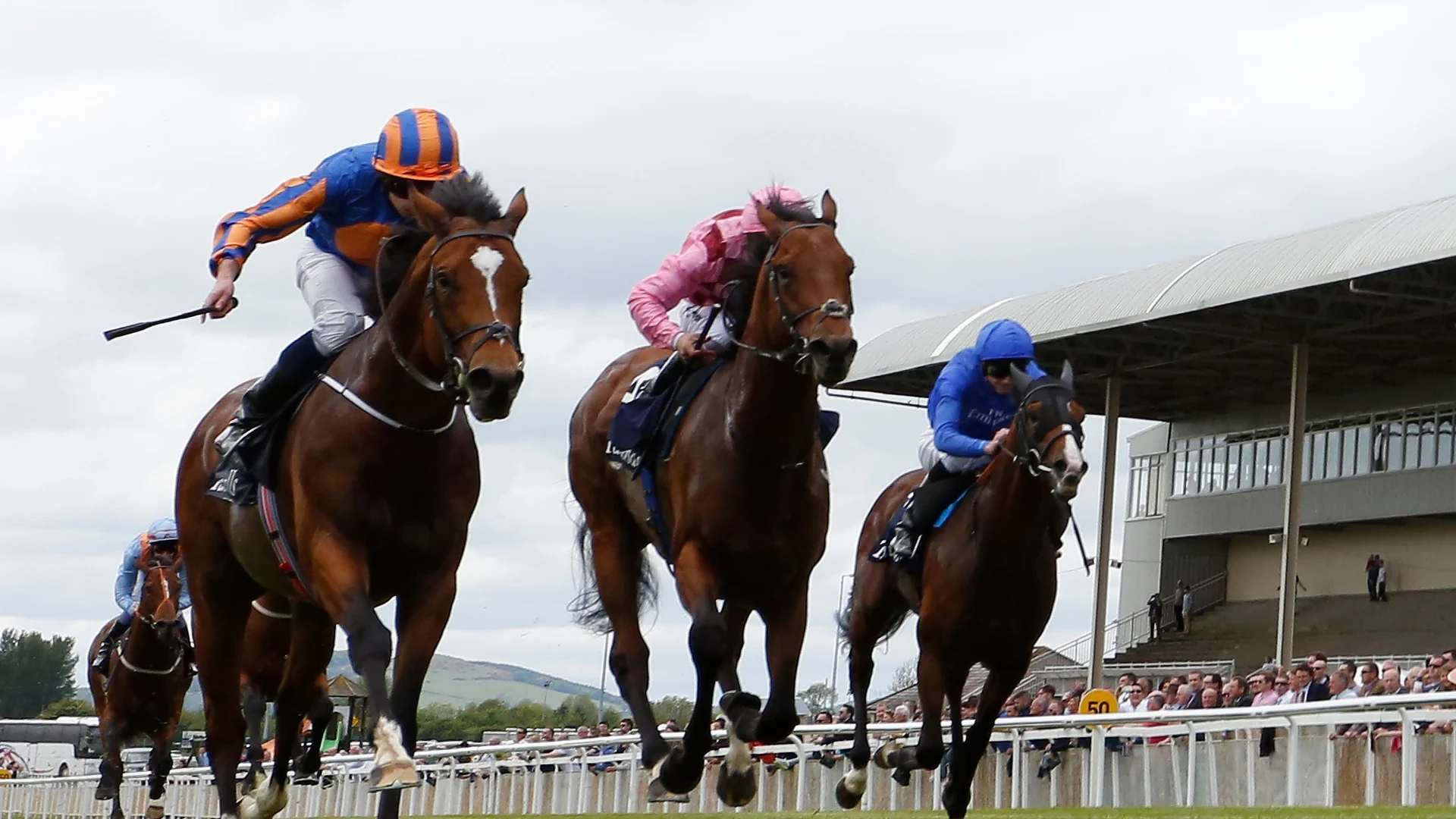It is an event in a class of its own: On every last weekend of January, the Snow Polo World Cup on the
frozen Lake St. Moritz draws a crowd of 20,000 spectators from all four corners of the globe. For three
days, the snow-covered, icy surface at the foot of St. Moritz becomes the epicentre of polo sports..
Locals, visitors, and the international polo community watch the spectacle as the world’s best polo
players challenge each other in the crisp air. The elegant evening dos and glittering parties are the
perfect locales to meet familiar faces. No one would have guessed it would ever come to that when, in
1983, Swiss hotelier Reto Gaudenzi took part in a polo match in Munich on a hot summer’s day
The St. Moritz polo team had just won the tournament in the capital of Bavaria when its founder Reto
Gaudenzi stepped in front of the media at the packed press conference. Engadine-born Gaudenzi had
been asked to enlighten the German journalists about St. Moritz’s polo history, no more, no less.
However, his friend Hans Peter Danuser, who also happened to be St. Moritz’s tourism director, had
travelled with him to Munich. Danuser had been toying with ideas to stage a British-themed event for
the centenary of the St. Moritz Cresta Club. So, on the spur of the moment, he suggested to Gaudenzi
to announce a novel idea: a polo tournament on snow to be held in St. Moritz. The plan had already
come up in the 1960s but never saw the light of day as the ball was impossible to play on the cold and
slippery surface.
Gaudenzi planned to trial the matches on the frozen lake in early 1984, just six months after the
memorable press conference, and hold the full-fledged tournament one year later, in early 1985. He set
off to make possible all that was needed to make his plan work: the novel “hoof grips” for one, a genius
invention by local farrier Peppino Cattaneo. These special horseshoes are still used today; a special
rubber tube on the inside prevents the snow from clogging up under the hoof. The second instrumental
component in helping the breakthrough was the switch to inflatable polo balls, so far used for indoor
games only. The road was clear for the dry run – so Reto Gaudenzi and his friends Gianni Berry and
Hanspeter Hörler played the first match with the new gear on the frozen lake. It went without a hitch.
“Aside from the fact that the three horses had never seen a polo mallet and turned the game into
something of a rodeo, everything went smoothly,” commented Reto Gaudenzi with a grin. The date for
the world premiere of “polo on snow” was announced: 25 and 26 January 1985.

Now began the search for the protagonists that would make this event happen: Which polo players
would take part? Who would provide the ponies? And who would foot the bill for all that? Hotelier
Gaudenzi fell back on his well-honed networking skills and contacted all his friends and acquaintances,
among them many polo players, succeeding in putting together two teams. Finding the financial backers
proved to be trickier. The project appealed to many sponsors, but they were reluctant to invest unless
they were given a guarantee that the world premiere would turn out to be a success.
Hanspeter Danuser arranged contact with Cartier Switzerland. Their director Horst Edenhofer took to
the idea from the start. His negotiations with the group’s president, Dominique Alain Perrin, didn’t
achieve the desired go-ahead. Gaudenzi took matters into his hand and reached out to the devoted polo
player he had met at a polo tournament in San Antonio, Texas, some years back. Perrin, finally, asked
in a nutshell: “ça marche, ou ça ne marche pas?” (will this work or not?) To which Gaudenzi replied
nonchalantly, “ça marche!”. That sealed the first sponsoring agreement, securing the seed capital for
the world premiere. An ingenious idea generated the remainder of the funds needed: With the help of
two friends, Gaudenzi produced shares with a face value of 100 Swiss Francs each for one square
metre of frozen lake, which they sold to fans. The shares were valid for one year and would become
worthless once the snow melted but would keep their sentimental value. “We took the risk – and the
gamble paid off,” says Gaudenzi. It seemed, now, nothing else stood in the way of the world premiere.
Everything was ready: the ice was thick enough, and the polo players had arrived from Munich, Paris,
and Geneva, along with their entourages. On the eve of the first match on Saturday, 26 January 1985,
it started snowing and snowed incessantly throughout the night. So much so that the perfectly groomed
playing field had disappeared in the morning beneath one meter of fresh powder. The crisis meeting at
6 AM on Saturday did not bode well. The municipality could not help out with machines to clear the
snow; it quickly became apparent that the authorities would rather cancel the event. They hadn’t
reckoned with Reto Gaudenzi, though! Within two hours, he managed to organise 18 snowblowers and
five Willy’s Jeeps with snow removal equipment; by 1 PM, they had cleared a field of 80 by 40 metres.
The tents were also ready: a tent that served as a stable for the ponies and a VIP tent with first-class
catering by St. Moritz’s star chef Reto Mathis. One hundred thirty journalists and a thousand spectators
came to watch the game. Not even the miserable visibility, the gloomy weather, or the challenging
conditions of the playing field were able to spoil the general excitement on this historic Saturday. After
the games, Gaudenzi climbed on a table in the VIP tent and declared, “St. Moritz always delivers!”. “We
had promised polo on snow,” he later added, “and they got polo on snow.”
And so it came that the event made the front pages of all the Sunday newspapers. And, to boot: Sunday
morning woke to clear skies and bright sunshine, and the grandstands were packed. A new sports
discipline saw the light of day – once more, one that was invented in St. Moritz. The world debut of snow
polo with team Cartier St. Moritz taking home the trophy was a big success. After two years of
preparation, Reto Gaudenzi fulfilled his promise of enacting the first polo games on snow – cementing
his reputation as a polo pioneer.

This unforgettable January weekend in 1985 sparked the spread of snow polo around the world and
helped revive the fascination with the 2,600-year-old sport. The St. Moritz tournament remains in a
league of its own, though: as the only high-goal tournament on snow, it still is, today, the most important
reunion of the global snow polo family. Having staged the annual snow polo tournament for 38 years is
no small feat, and thanks go to many parties: sponsors, patrons, the city of St. Moritz and its tourism
board, and not least, countless volunteers, many of them local, have all pitched in in their way to make
the polo tournament happen. What goes for polo playing applies even more to organising the games: it
takes a strong team’s concerted effort!
Gaudenzi immediately took to Danuser’s idea and declared to the journalists grandly: “St. Moritz wil
host the world’s first polo on snow games.” Without knowing whether they could carry out their plan, he
put all his eggs in one basket. The two Swiss surprised the media with their announcement of a world
premiere, grabbing the headlines the following morning. Neither of them realised what was in store for
them. “The magnitude of what I had let myself in for only dawned upon me in the following weeks,” he
later admitted. But there was no way out – he had to deliver.
The Snow Polo World Cup will take place 26–28 January 2024. As always, admission is free. This year
players in the spotlight “Pelon” Stirling are Fred Mannix from Canada – without a doubt, one of the best, if not the best, amateur players in the world – and the Englishman Max Charlton, who for many is the best player on snow. Meanwhile, the reigning FIP Polo World Champion Pelayo Berazadi (Spain) will certainly have a lot of say in the final result.
Watch this space …





